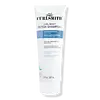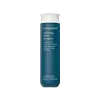What's inside
What's inside
 Key Ingredients
Key Ingredients

 Benefits
Benefits

 Concerns
Concerns

 Ingredients Side-by-side
Ingredients Side-by-side

Water
Skin ConditioningSodium C14-16 Olefin Sulfonate
CleansingCellulose
AbsorbentCocamidopropyl Hydroxysultaine
CleansingAcrylates Copolymer
Sodium Cocoyl Isethionate
CleansingMalva Sylvestris Flower Extract
Skin ConditioningZingiber Officinale Root Extract
MaskingUrtica Dioica Leaf Extract
Skin ConditioningVinegar
Glycerin
HumectantMentha Piperita Oil
MaskingPolyquaternium-10
Sodium Gluconate
Skin ConditioningPhytic Acid
Propanediol
SolventHelianthus Annuus Seed Oil
EmollientTocopherol
AntioxidantSodium Chloride
MaskingPotassium Sorbate
PreservativeSodium Hydroxide
BufferingPhenoxyethanol
PreservativeSodium Benzoate
MaskingParfum
MaskingLinalool
PerfumingLimonene
PerfumingCitrus Aurantium Peel Oil
Water, Sodium C14-16 Olefin Sulfonate, Cellulose, Cocamidopropyl Hydroxysultaine, Acrylates Copolymer, Sodium Cocoyl Isethionate, Malva Sylvestris Flower Extract, Zingiber Officinale Root Extract, Urtica Dioica Leaf Extract, Vinegar, Glycerin, Mentha Piperita Oil, Polyquaternium-10, Sodium Gluconate, Phytic Acid, Propanediol, Helianthus Annuus Seed Oil, Tocopherol, Sodium Chloride, Potassium Sorbate, Sodium Hydroxide, Phenoxyethanol, Sodium Benzoate, Parfum, Linalool, Limonene, Citrus Aurantium Peel Oil
Water
Skin ConditioningSodium Lauroyl Methyl Isethionate
CleansingCocamidopropyl Hydroxysultaine
CleansingSodium Methyl Cocoyl Taurate
CleansingDecyl Glucoside
CleansingCetearyl Alcohol
EmollientGlyceryl Caprylate/Caprate
EmollientCetyl Alcohol
EmollientCetyl Stearate
EmollientCharcoal Powder
AbrasiveBetaine
HumectantSodium Cocoyl Alaninate
Tetrasodium Glutamate Diacetate
Hydroxyphenyl Propamidobenzoic Acid
Skin ConditioningSodium Polystyrene Sulfonate
Emulsion StabilisingPEG-5 Ethylhexanoate
EmulsifyingGlyceryl Stearate
EmollientIsostearyl Isostearate
EmollientStearic Acid
CleansingPotassium Cetyl Phosphate
EmulsifyingGlycerin
HumectantSteareth-20
CleansingPEG-75 Stearate
Trideceth-9
EmulsifyingCeteth-20
CleansingAcrylates/C10-30 Alkyl Acrylate Crosspolymer
Emulsion StabilisingParfum
MaskingSodium Hydroxide
BufferingPropanediol
SolventEthylhexylglycerin
Skin ConditioningHydroxyacetophenone
AntioxidantLinalool
PerfumingHexyl Cinnamal
PerfumingCitronellol
PerfumingLimonene
PerfumingWater, Sodium Lauroyl Methyl Isethionate, Cocamidopropyl Hydroxysultaine, Sodium Methyl Cocoyl Taurate, Decyl Glucoside, Cetearyl Alcohol, Glyceryl Caprylate/Caprate, Cetyl Alcohol, Cetyl Stearate, Charcoal Powder, Betaine, Sodium Cocoyl Alaninate, Tetrasodium Glutamate Diacetate, Hydroxyphenyl Propamidobenzoic Acid, Sodium Polystyrene Sulfonate, PEG-5 Ethylhexanoate, Glyceryl Stearate, Isostearyl Isostearate, Stearic Acid, Potassium Cetyl Phosphate, Glycerin, Steareth-20, PEG-75 Stearate, Trideceth-9, Ceteth-20, Acrylates/C10-30 Alkyl Acrylate Crosspolymer, Parfum, Sodium Hydroxide, Propanediol, Ethylhexylglycerin, Hydroxyacetophenone, Linalool, Hexyl Cinnamal, Citronellol, Limonene
Ingredients Explained
These ingredients are found in both products.
Ingredients higher up in an ingredient list are typically present in a larger amount.
Cocamidopropyl Hydroxysultaine is a synthetic cleansing agent, though it is derived from coconut oil.
It is used to enhance the texture of products by boosting lather and thickening the texture. As a cleanser, Cocamidopropyl Hydroxysultaine is mild.
Glycerin is already naturally found in your skin. It helps moisturize and protect your skin.
A study from 2016 found glycerin to be more effective as a humectant than AHAs and hyaluronic acid.
As a humectant, it helps the skin stay hydrated by pulling moisture to your skin. The low molecular weight of glycerin allows it to pull moisture into the deeper layers of your skin.
Hydrated skin improves your skin barrier; Your skin barrier helps protect against irritants and bacteria.
Glycerin has also been found to have antimicrobial and antiviral properties. Due to these properties, glycerin is often used in wound and burn treatments.
In cosmetics, glycerin is usually derived from plants such as soybean or palm. However, it can also be sourced from animals, such as tallow or animal fat.
This ingredient is organic, colorless, odorless, and non-toxic.
Glycerin is the name for this ingredient in American English. British English uses Glycerol/Glycerine.
Learn more about GlycerinLimonene is a fragrance that adds scent and taste to a formulation.
It's found in the peel oil of citrus fruits and other plants such as lavender and eucalyptus. The scent of limonene is generally described as "sweet citrus".
Limonene acts as an antioxidant, meaning it helps neutralize free radicals.
When exposed to air, oxidized limonene may sensitize the skin. Because of this, limonene is often avoided by people with sensitive skin.
The term 'fragrance' is not regulated in many countries. In many cases, it is up to the brand to define this term. For instance, many brands choose to label themselves as "fragrance-free" because they are not using synthetic fragrances. However, their products may still contain ingredients such as essential oils that are considered a fragrance.
Learn more about LimoneneLinalool is a fragrance and helps add scent to products. It's derived from common plants such as cinnamon, mint, citrus, and lavender.
Like Limonene, this ingredient oxidizes when exposed to air. Oxidized linalool can cause allergies and skin sensitivity.
This ingredient has a scent that is floral, spicy tropical, and citrus-like.
Learn more about LinaloolParfum is a catch-all term for an ingredient or more that is used to give a scent to products.
Also called "fragrance", this ingredient can be a blend of hundreds of chemicals or plant oils. This means every product with "fragrance" or "parfum" in the ingredients list is a different mixture.
For instance, Habanolide is a proprietary trade name for a specific aroma chemical. When used as a fragrance ingredient in cosmetics, most aroma chemicals fall under the broad labeling category of “FRAGRANCE” or “PARFUM” according to EU and US regulations.
The term 'parfum' or 'fragrance' is not regulated in many countries. In many cases, it is up to the brand to define this term.
For instance, many brands choose to label themselves as "fragrance-free" because they are not using synthetic fragrances. However, their products may still contain ingredients such as essential oils that are considered a fragrance by INCI standards.
One example is Calendula flower extract. Calendula is an essential oil that still imparts a scent or 'fragrance'.
Depending on the blend, the ingredients in the mixture can cause allergies and sensitivities on the skin. Some ingredients that are known EU allergens include linalool and citronellol.
Parfum can also be used to mask or cover an unpleasant scent.
The bottom line is: not all fragrances/parfum/ingredients are created equally. If you are worried about fragrances, we recommend taking a closer look at an ingredient. And of course, we always recommend speaking with a professional.
Learn more about ParfumPropanediol is an all-star ingredient. It softens, hydrates, and smooths the skin.
It’s often used to:
Propanediol is not likely to cause sensitivity and considered safe to use. It is derived from corn or petroleum with a clear color and no scent.
Learn more about PropanediolSodium Hydroxide is also known as lye or caustic soda. It is used to adjust the pH of products; many ingredients require a specific pH to be effective.
In small amounts, sodium hydroxide is considered safe to use. However, large amounts may cause chemical burns due to its high alkaline.
Your skin has a natural pH and acid mantle. This acid mantle helps prevent harmful bacteria from breaking through. The acid mantle also helps keep your skin hydrated.
"Alkaline" refers to a high pH level. A low pH level would be considered acidic.
Learn more about Sodium HydroxideWater. It's the most common cosmetic ingredient of all. You'll usually see it at the top of ingredient lists, meaning that it makes up the largest part of the product.
So why is it so popular? Water most often acts as a solvent - this means that it helps dissolve other ingredients into the formulation.
You'll also recognize water as that liquid we all need to stay alive. If you see this, drink a glass of water. Stay hydrated!
Learn more about Water